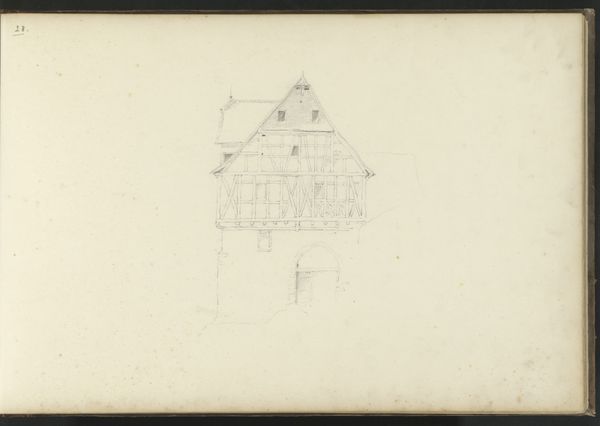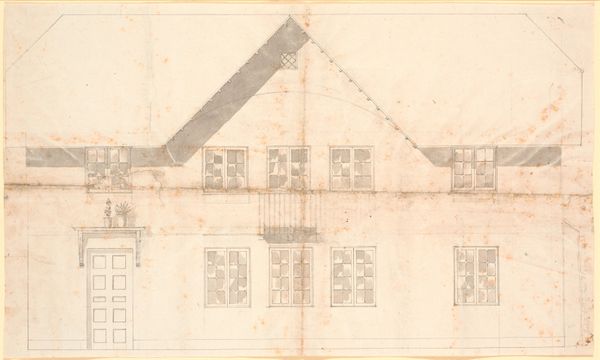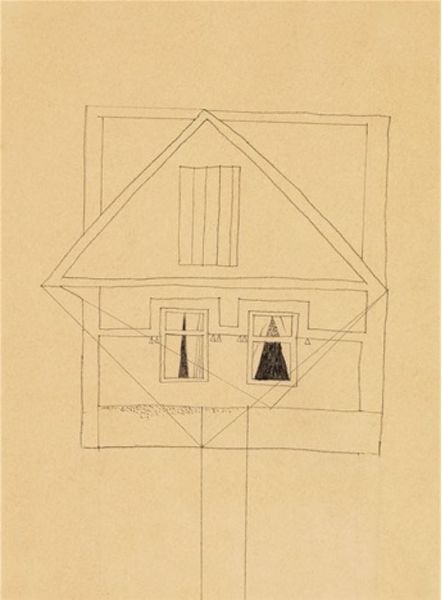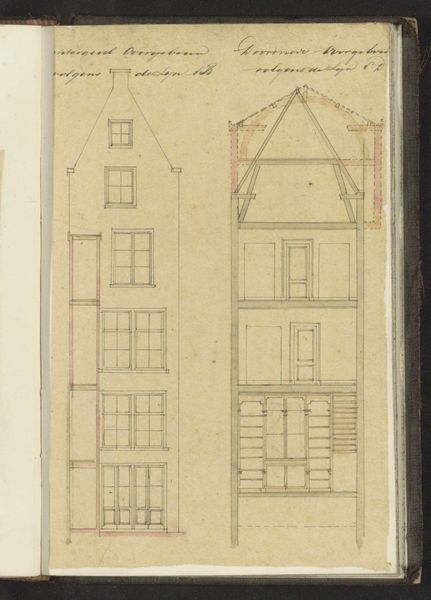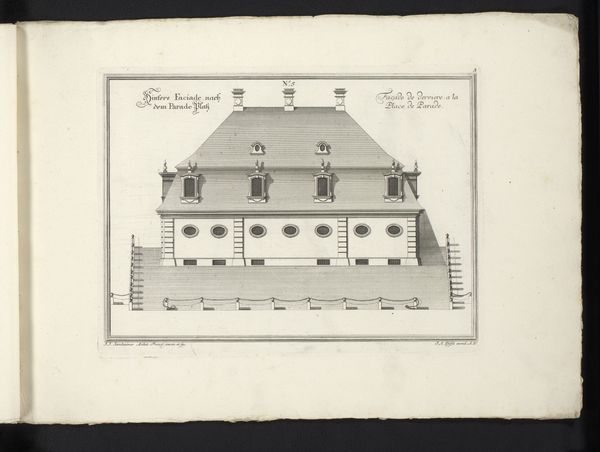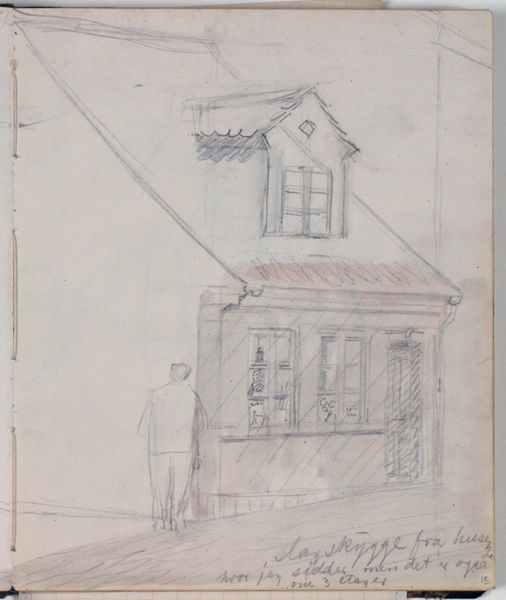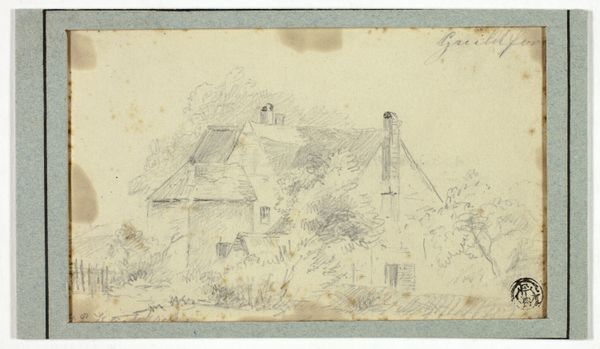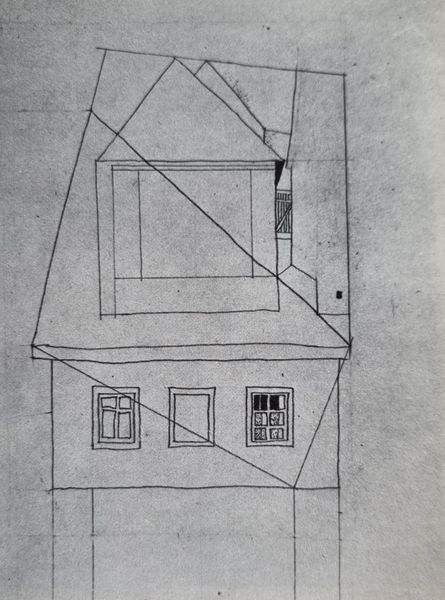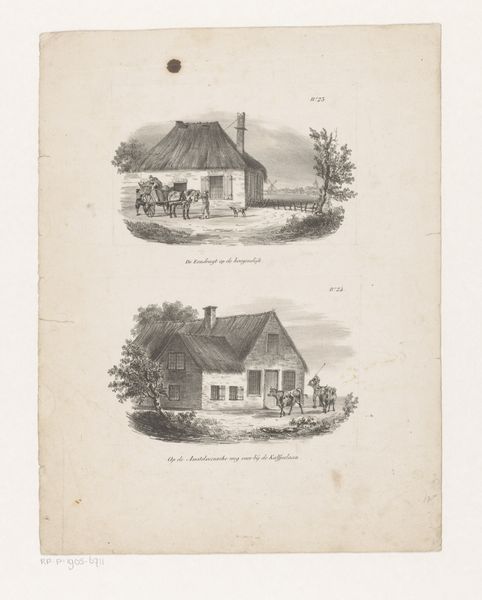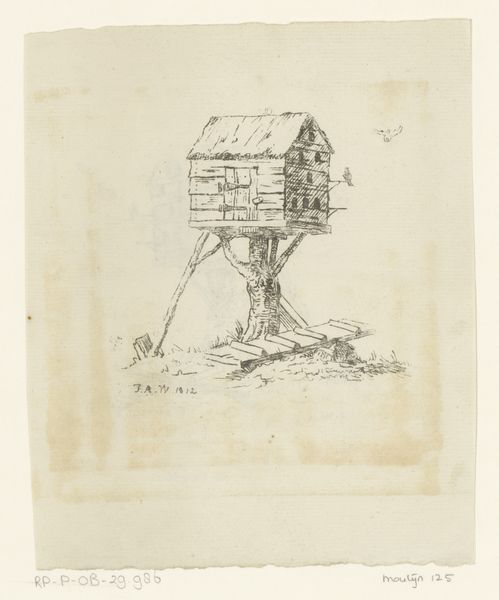
drawing, paper, watercolor, architecture
#
drawing
#
neoclassicism
#
paper
#
watercolor
#
cityscape
#
watercolor
#
architecture
Dimensions: 226 mm (height) x 184 mm (width) (bladmaal)
Curator: Welcome! Today, we’re looking at "The Eastern Gable of Spurveskjul" by Nicolai Abildgaard, made between 1803 and 1809. It’s a drawing, a watercolor on paper, currently held here at the SMK. Editor: My initial impression is one of austerity, almost bleakness. The muted color palette and sharp architectural lines feel rather cold, despite the presence of domestic features like windows and a chimney. There's also what appear to be some light stains and inconsistencies of craft across the drawing. Curator: That perceived austerity aligns with Abildgaard’s neoclassicism, a style deeply influenced by Enlightenment ideals emphasizing order and reason. Architectural drawing at this time also fulfilled the functional demands of building construction. The work reveals a moment in which classicism sought to define civic and domestic aesthetics. Editor: It’s interesting to consider neoclassicism's political implications—a visual language of stability, but also potential rigidity imposed through material. What would daily life have been for inhabitants here, amidst the burgeoning shifts in labor practices of the time, and how did these manifest on surfaces, the build? Curator: It represents a departure from the decorative excesses of the Rococo era. Abildgaard, a professor and later director at the Academy, sought to promote art with civic virtue and educational potential. This elevation of architectural representation helped promote a particular model of citizenship during this period. Editor: I do wonder, though, about that tension. Was it always received as 'virtuous' or perhaps sometimes as another imposition upon already strained livelihoods? The raw materiality feels crucial here – paper, watercolor, and the potential they possess, depending on the craftsman who wields them. Curator: His influence extended to a younger generation of artists who shaped Danish art during the Golden Age. Consider the historical context. It reflects the aspirations and socio-political projects undertaken. The drawing gives material form to changing aesthetic sensibilities, influencing subsequent building practice in the country. Editor: So, it’s a fascinating convergence, this piece; an architect’s conceptual outline brought to reality. How fascinating to consider it simultaneously on a political level and also through material means: ink, tools, labor, and their subsequent interplay. Thanks for shedding light on that history!
Comments
No comments
Be the first to comment and join the conversation on the ultimate creative platform.
